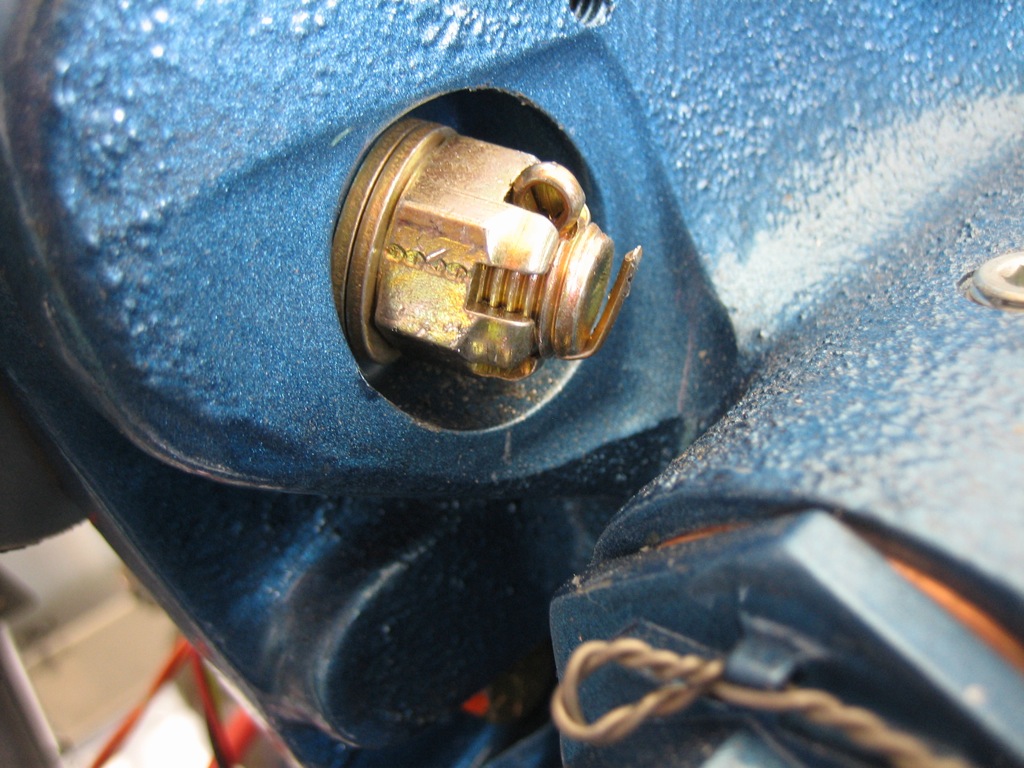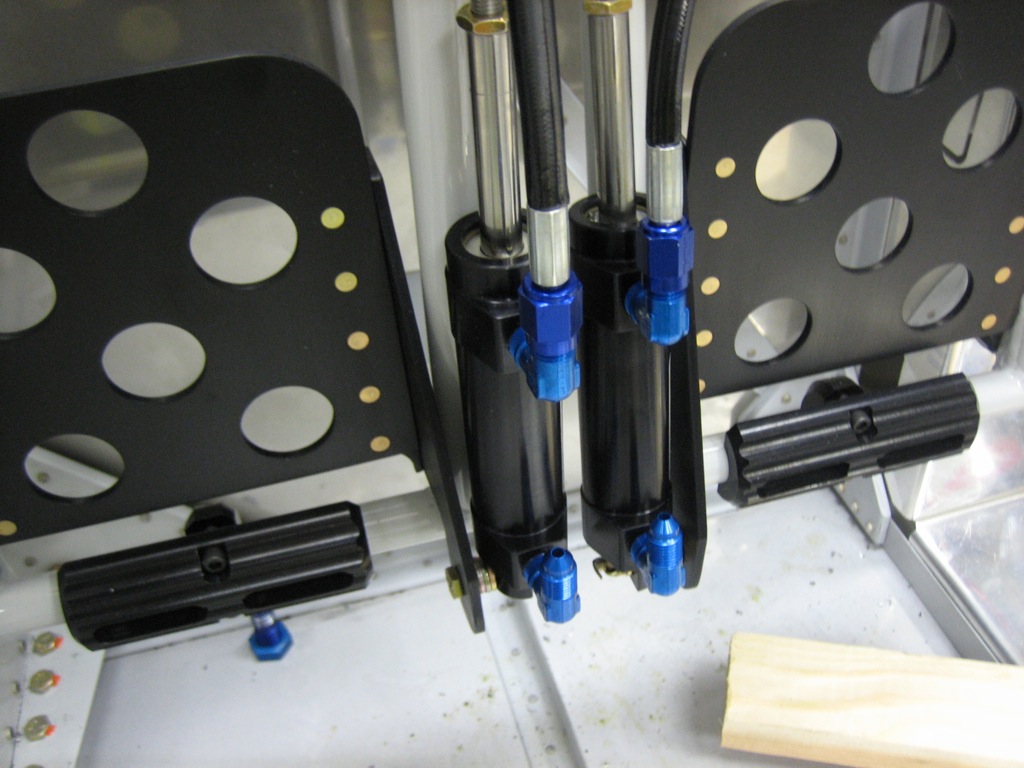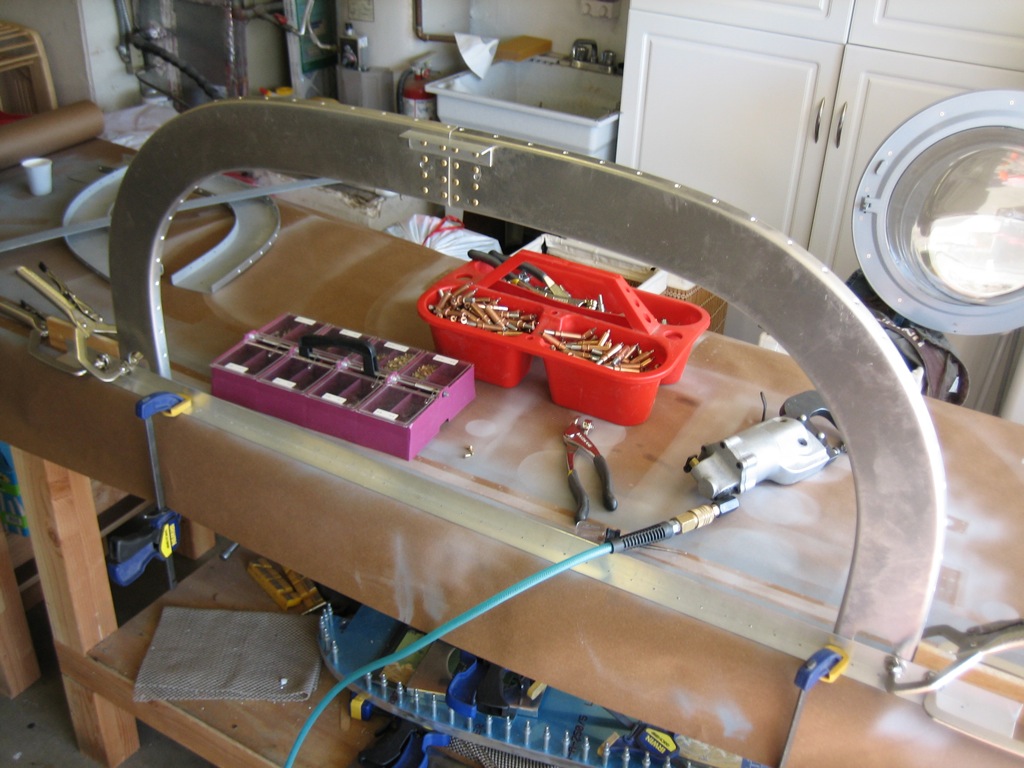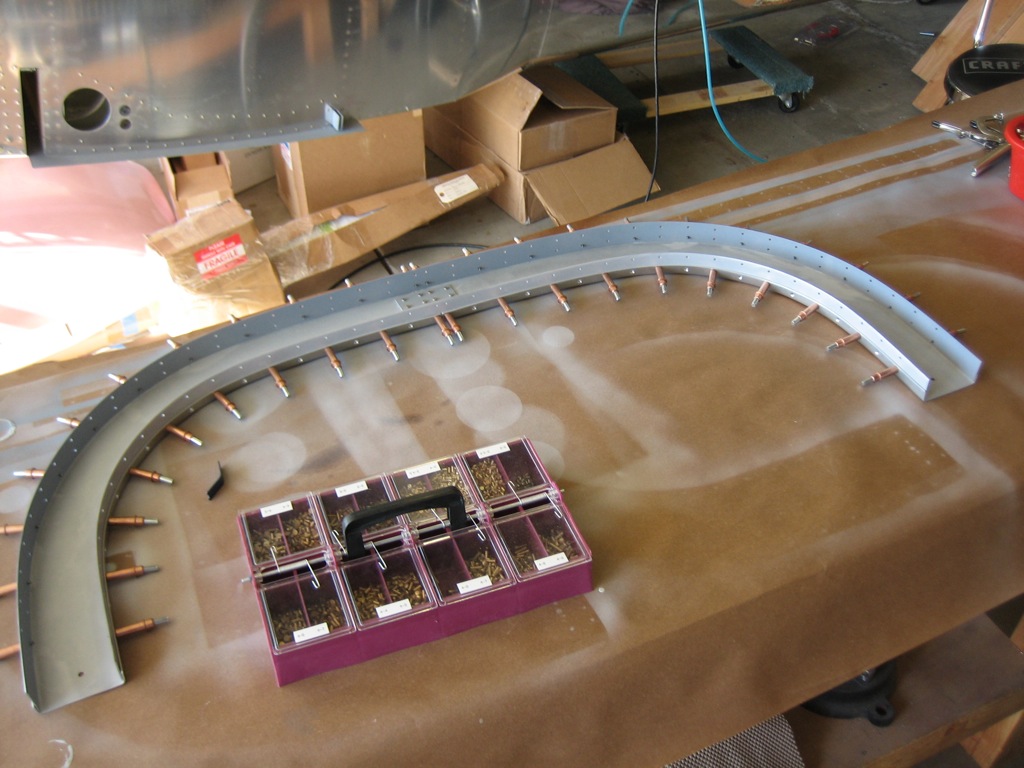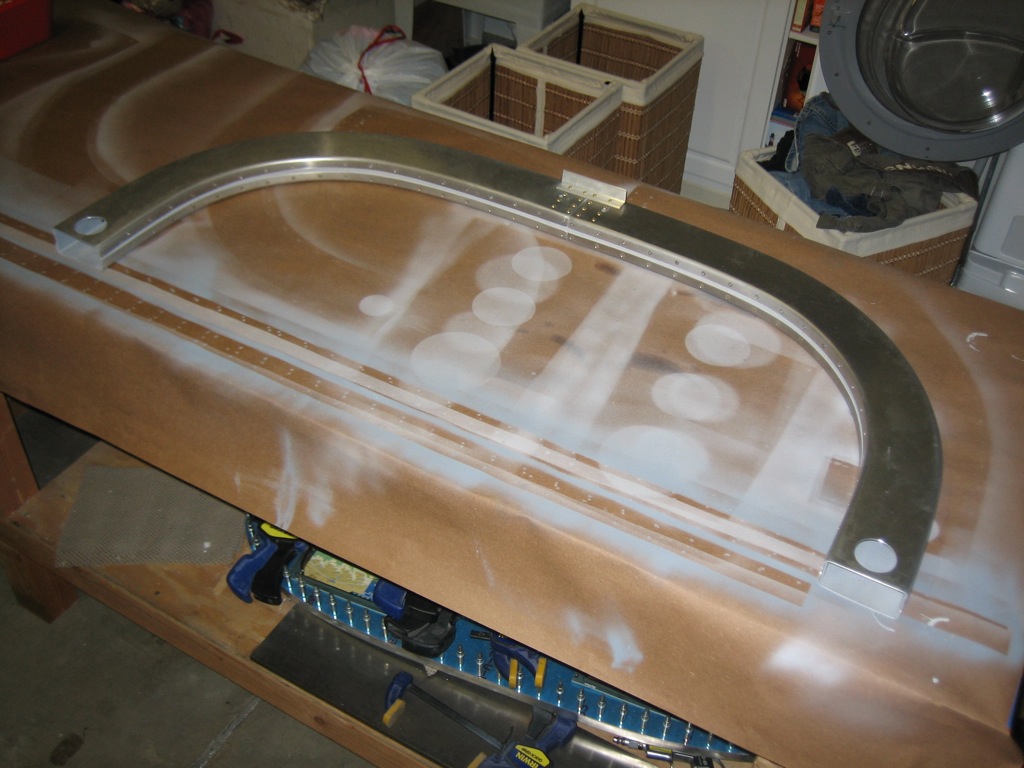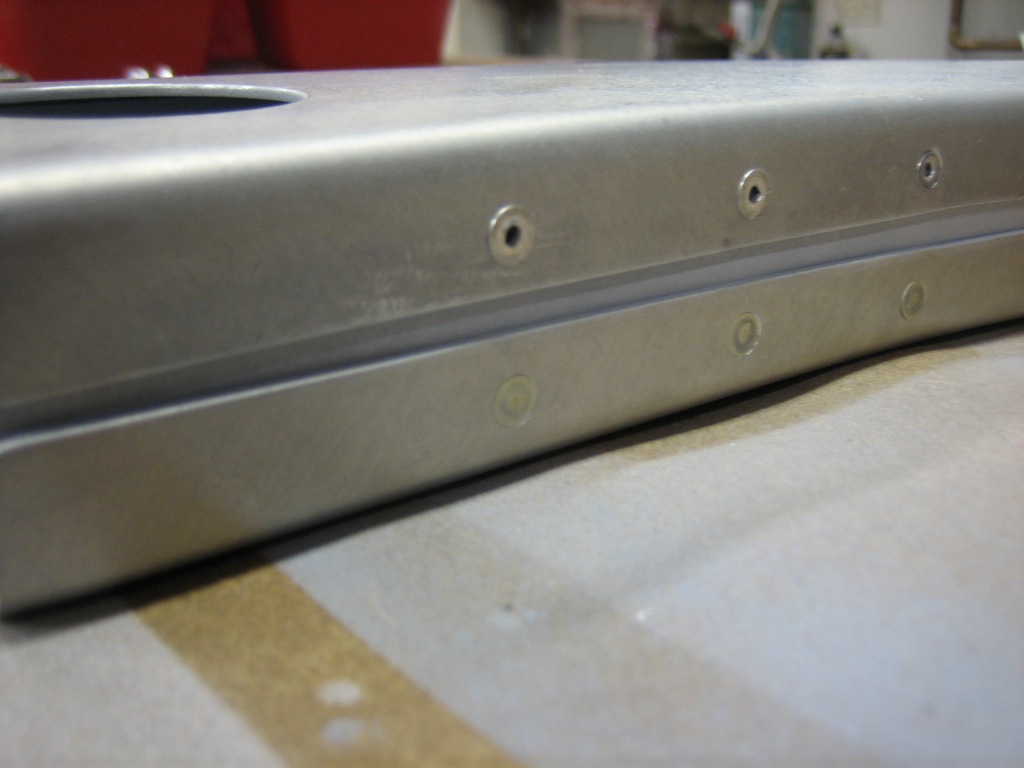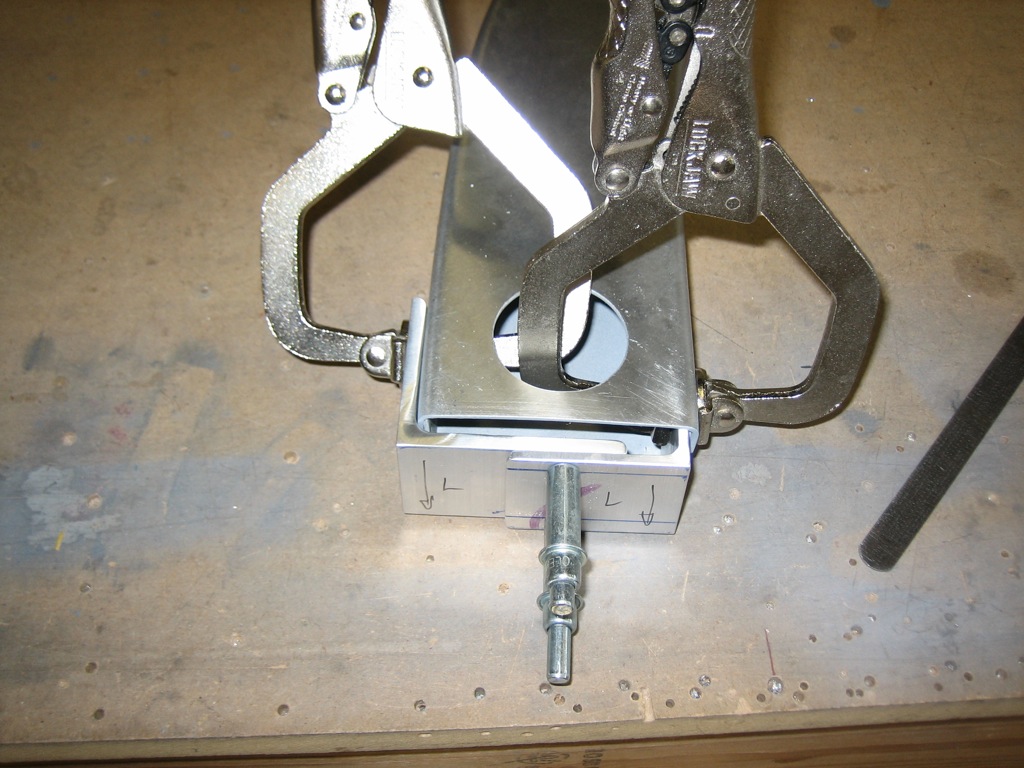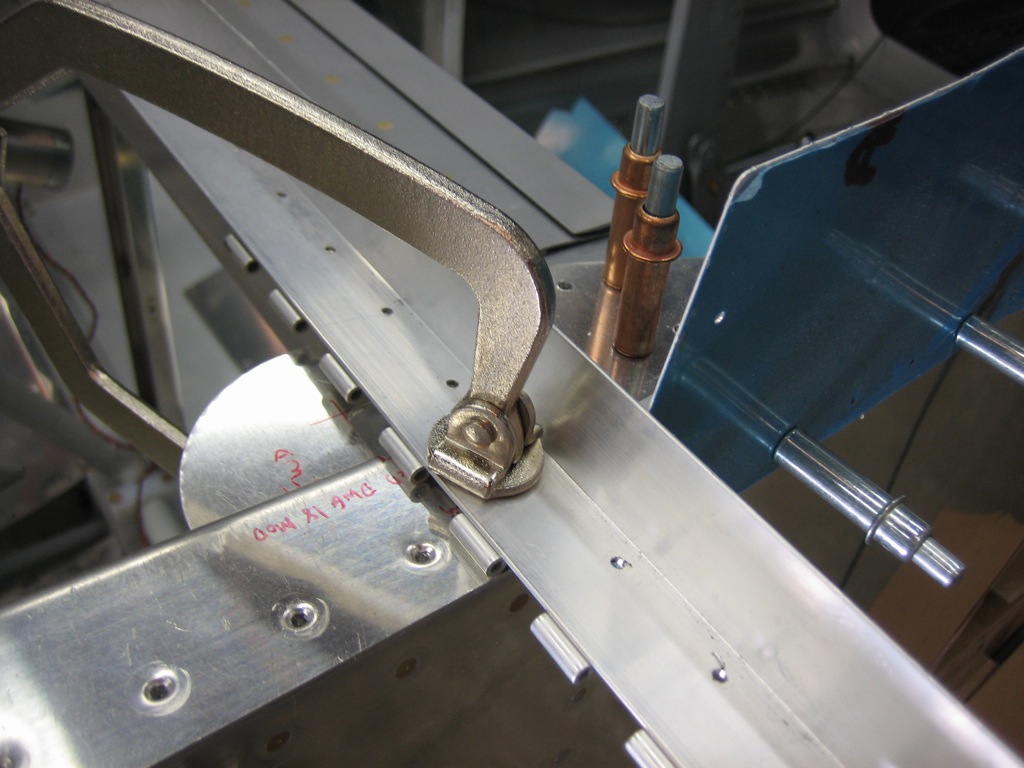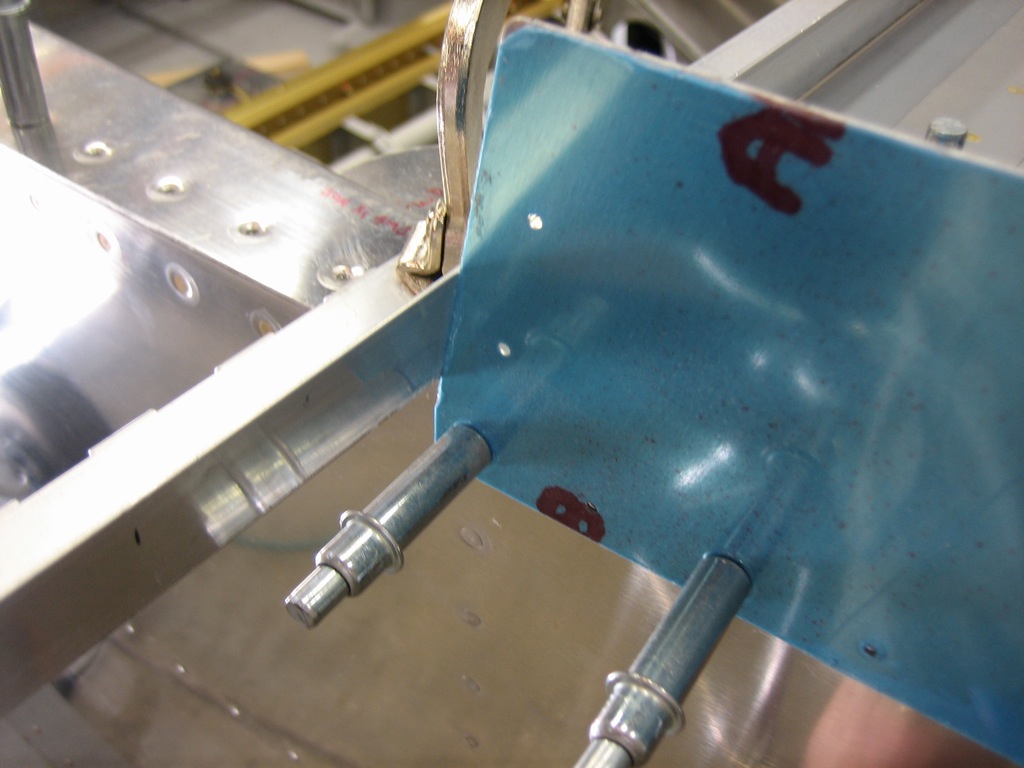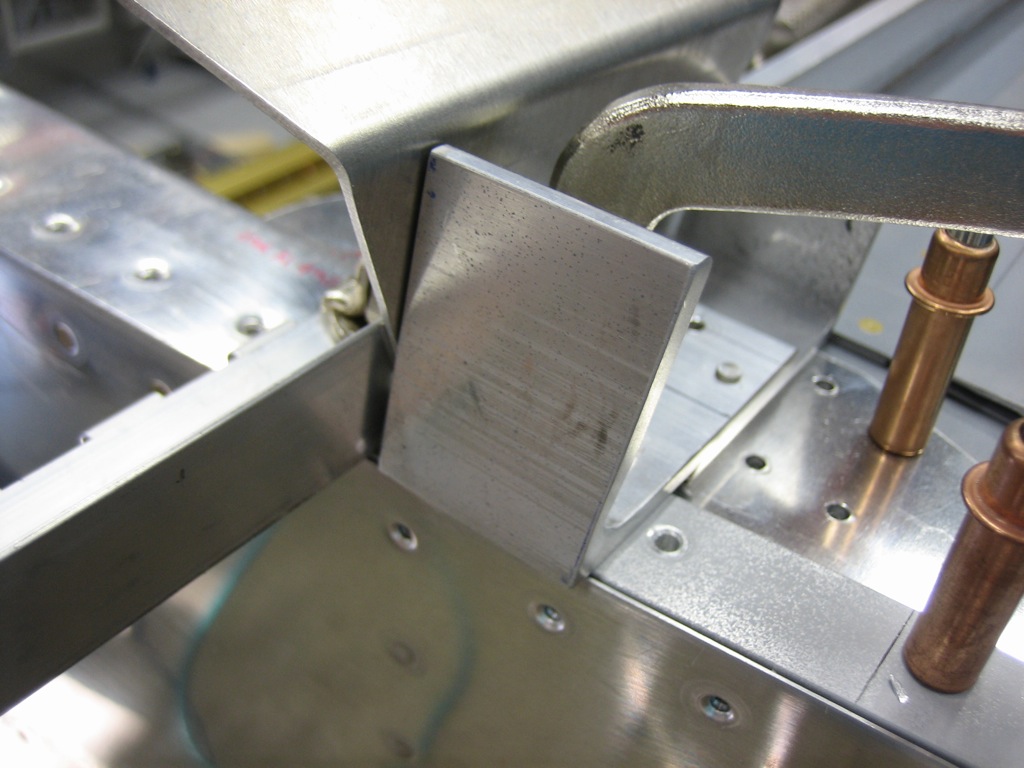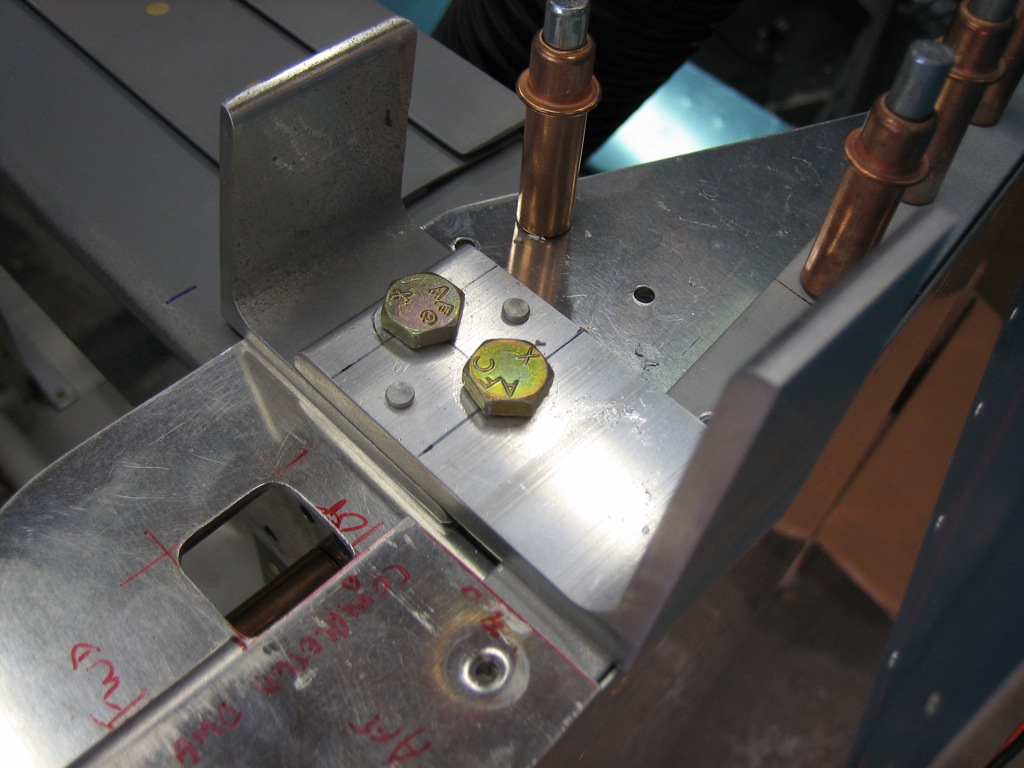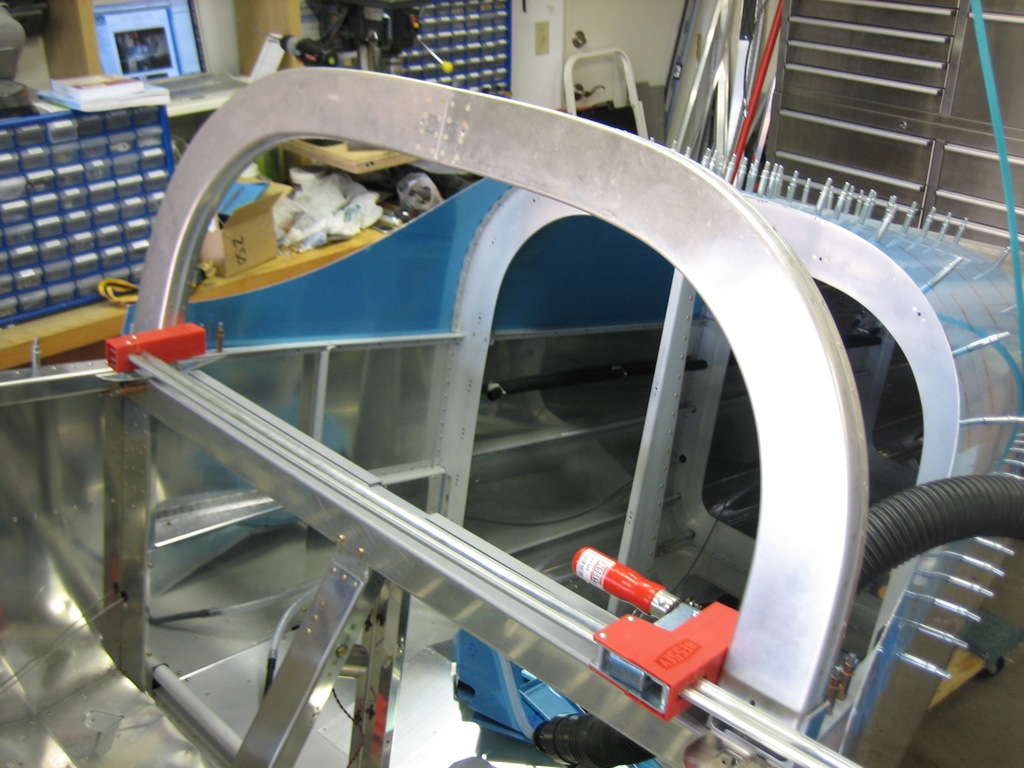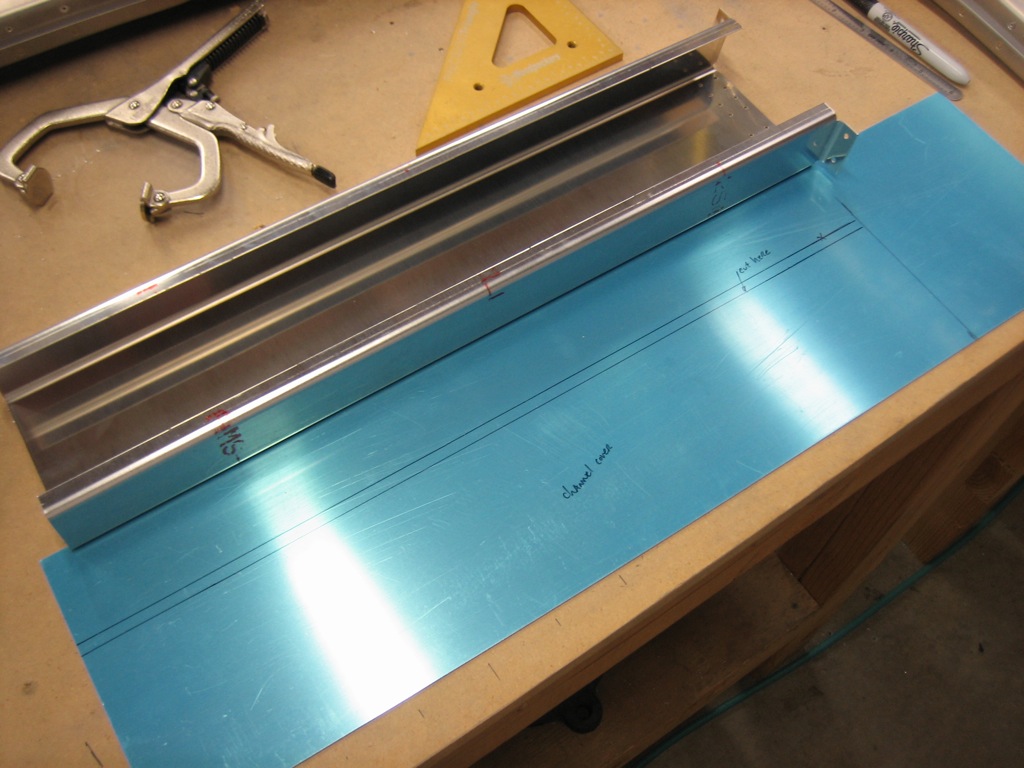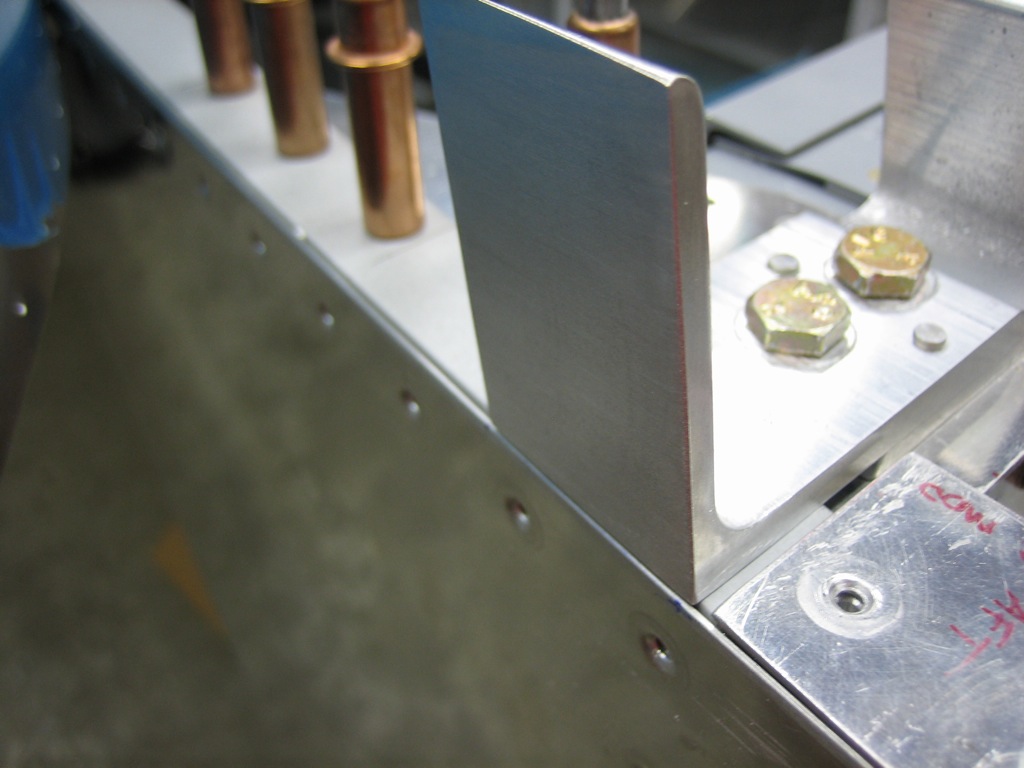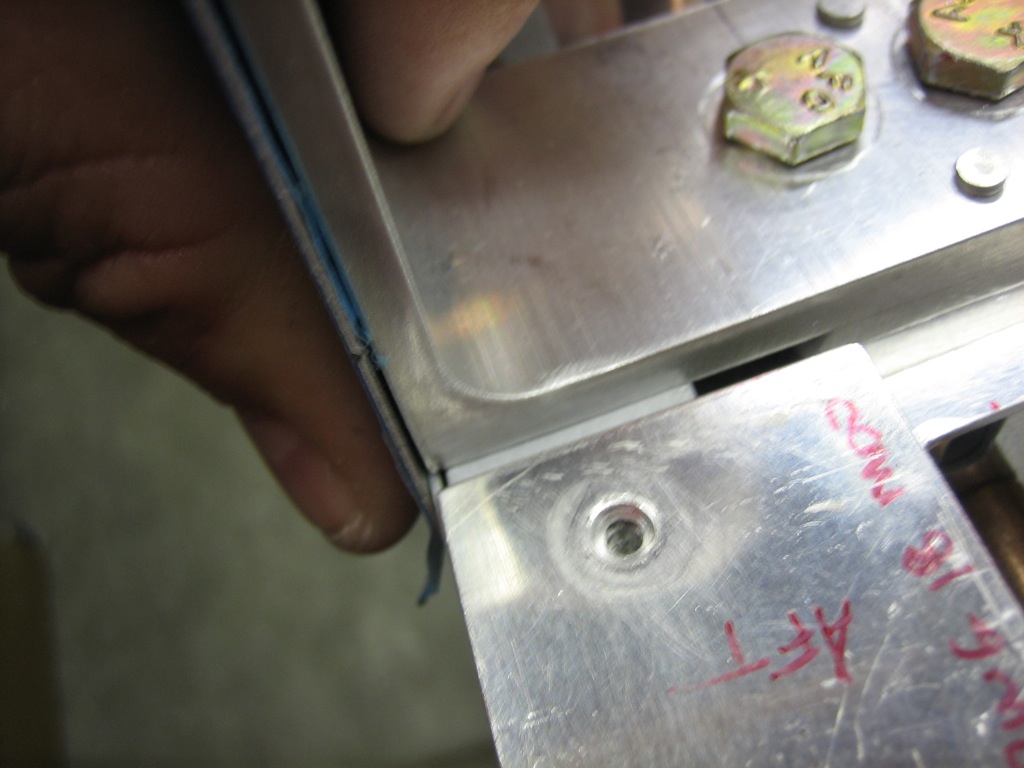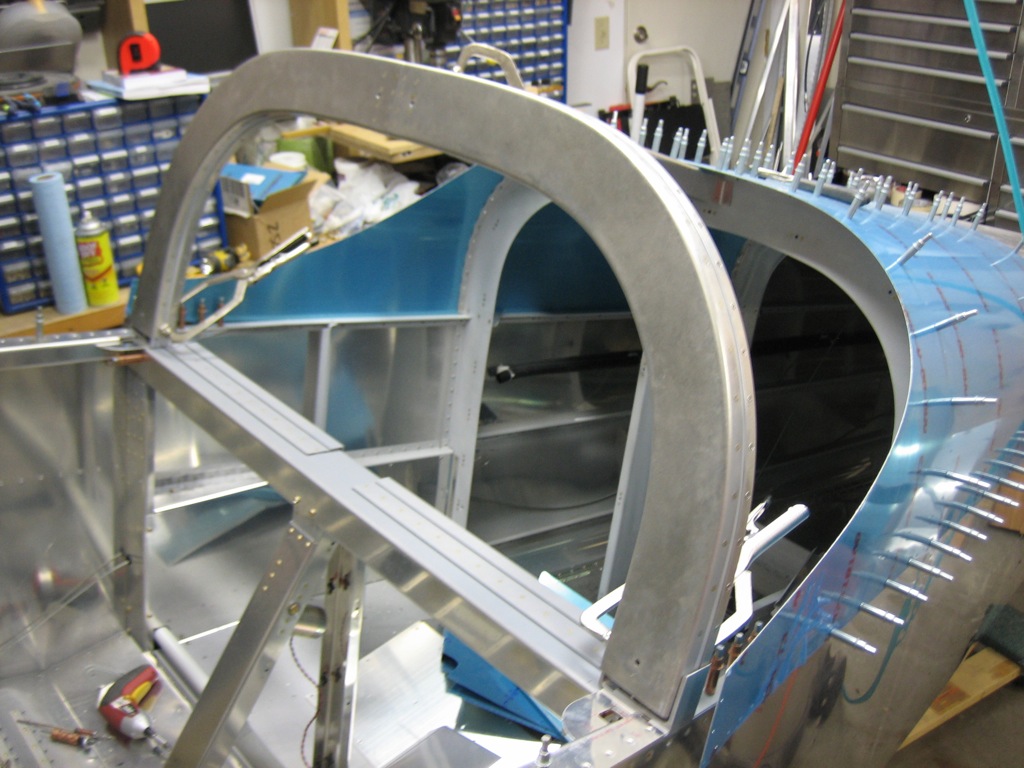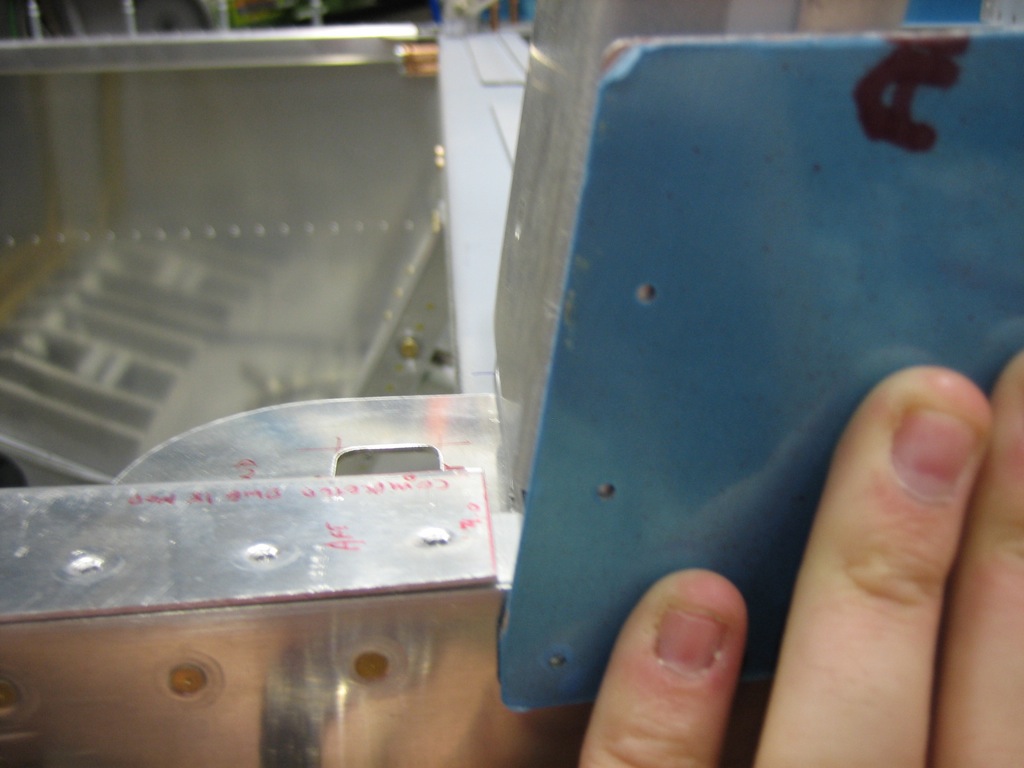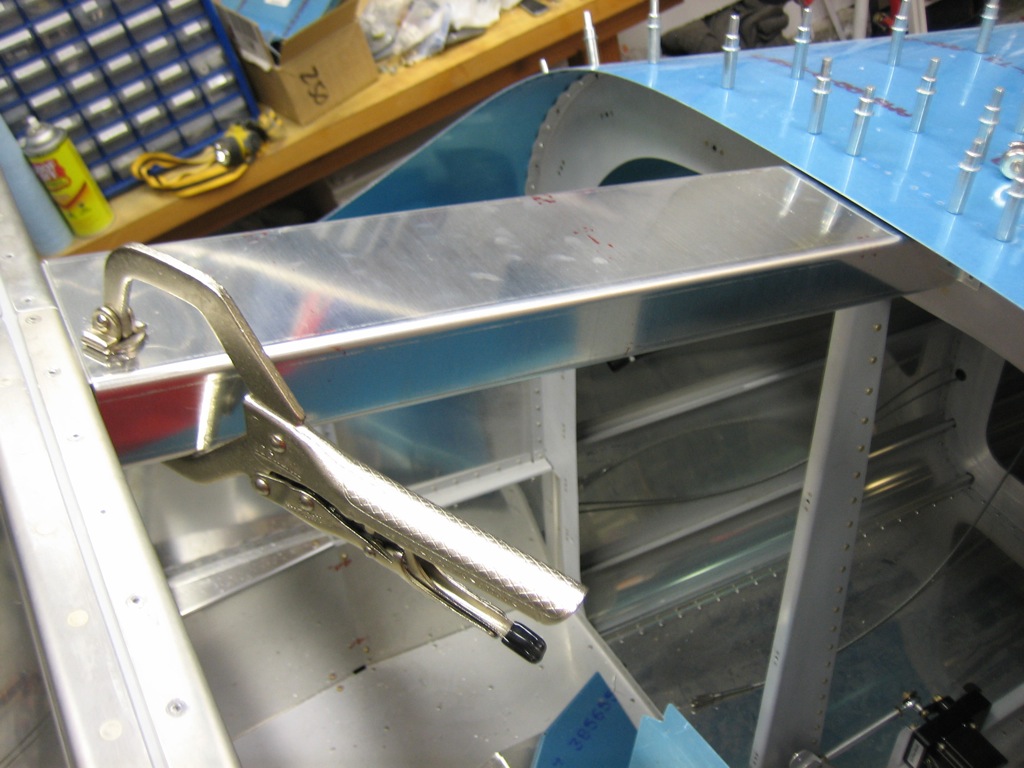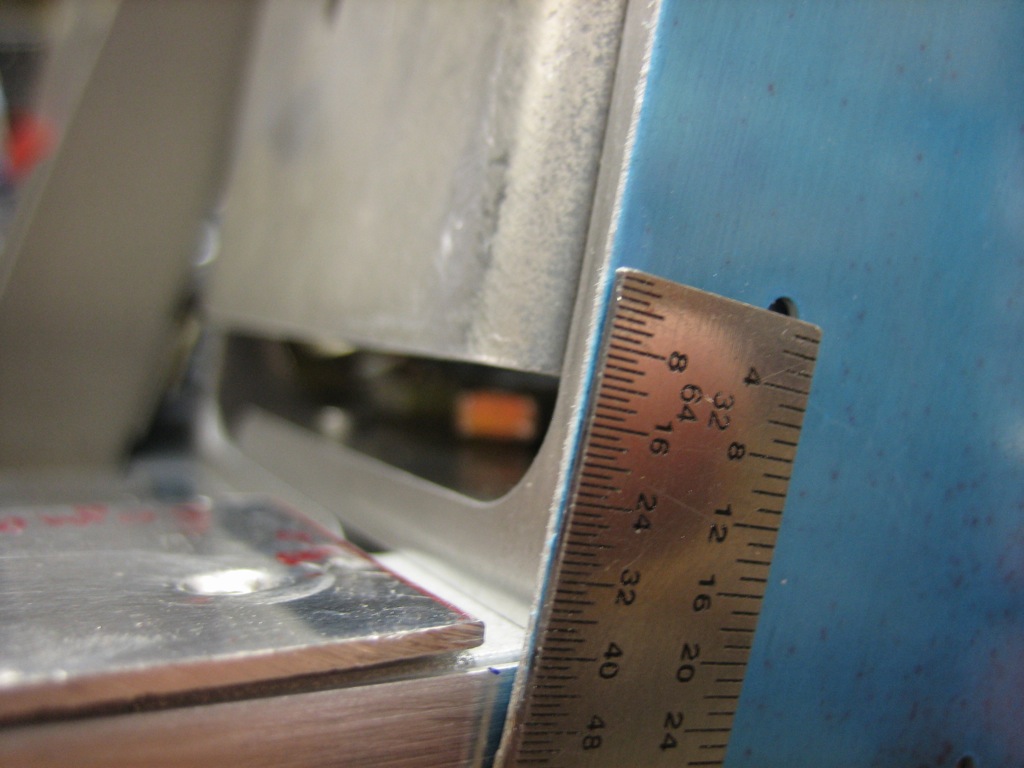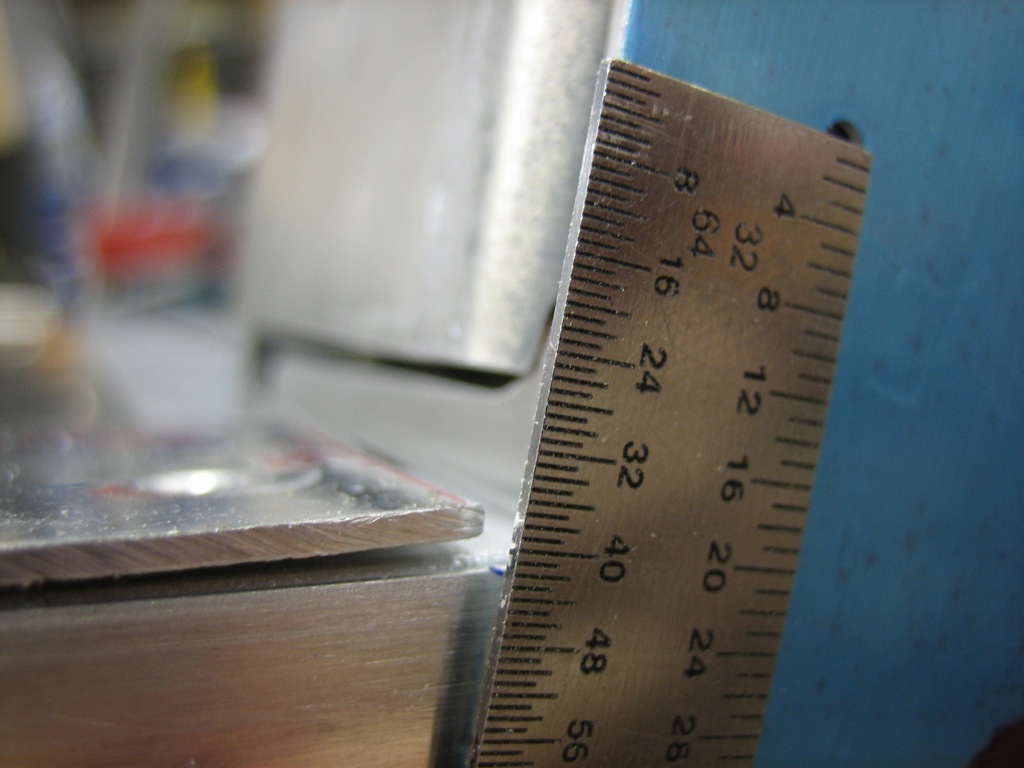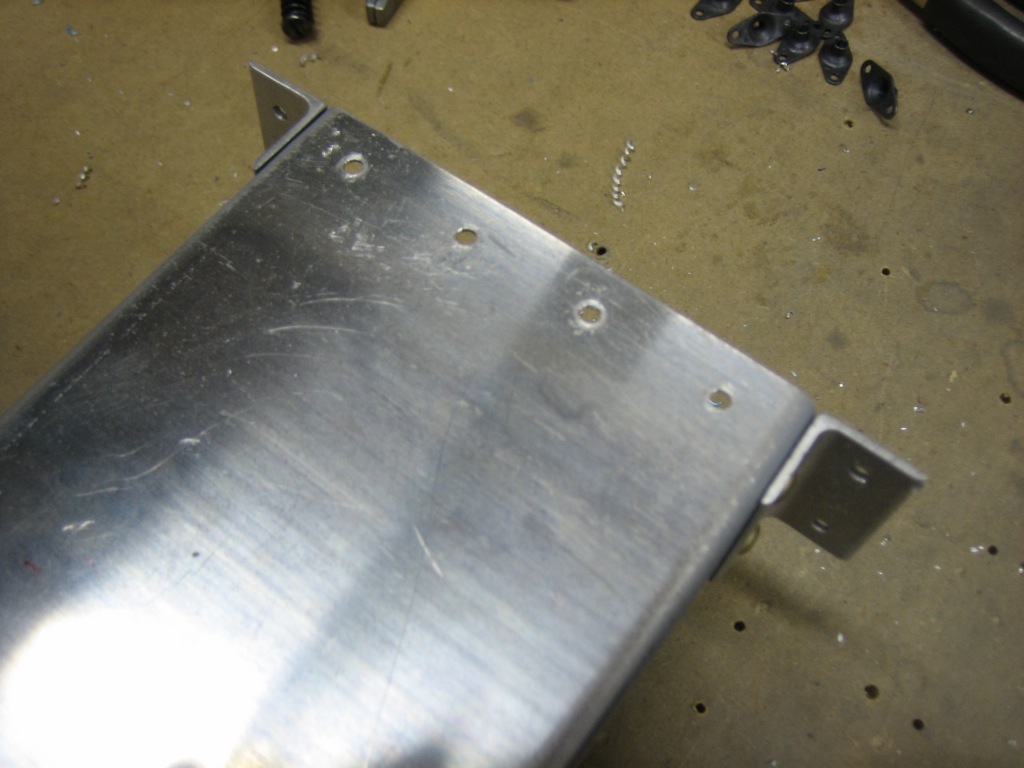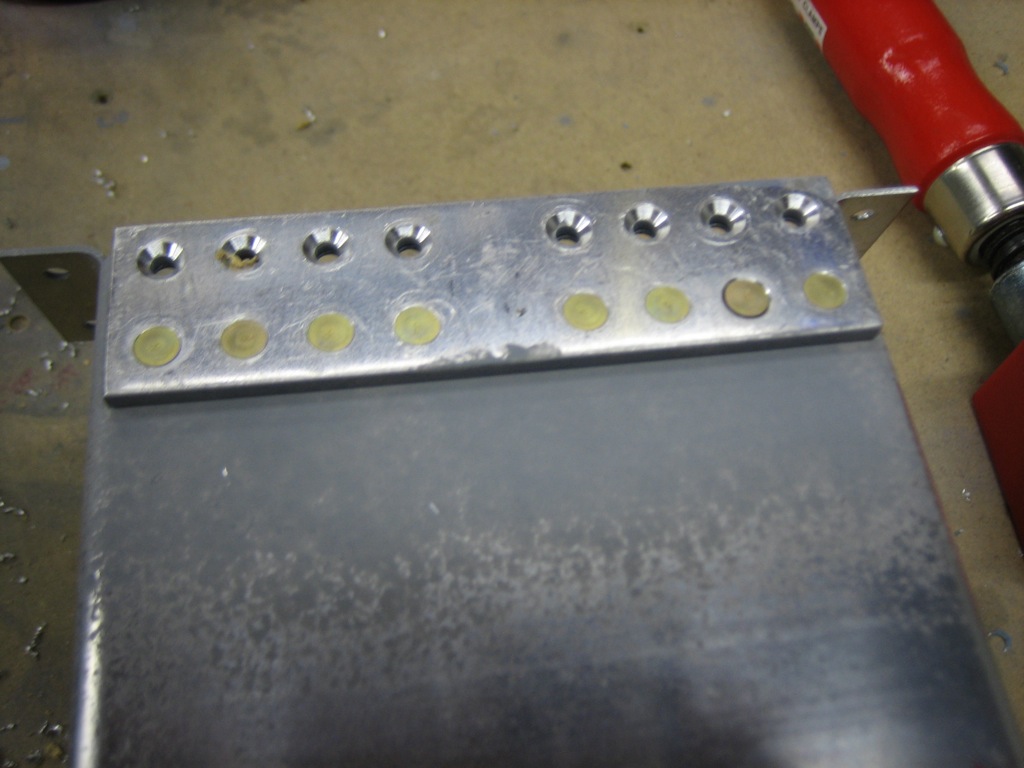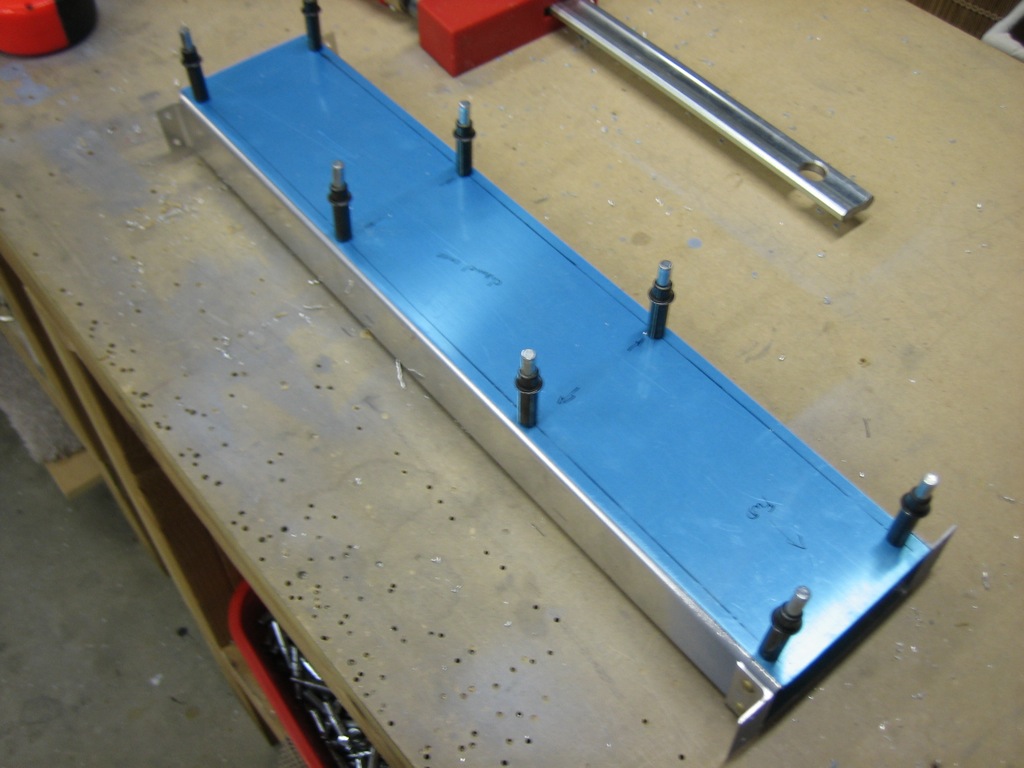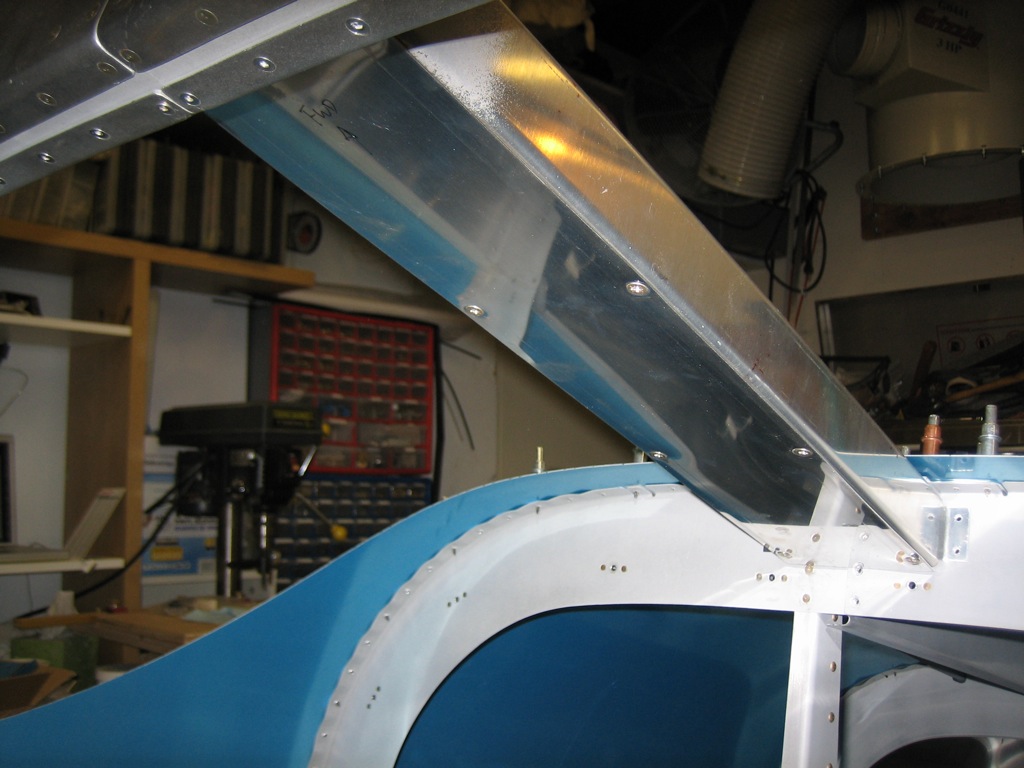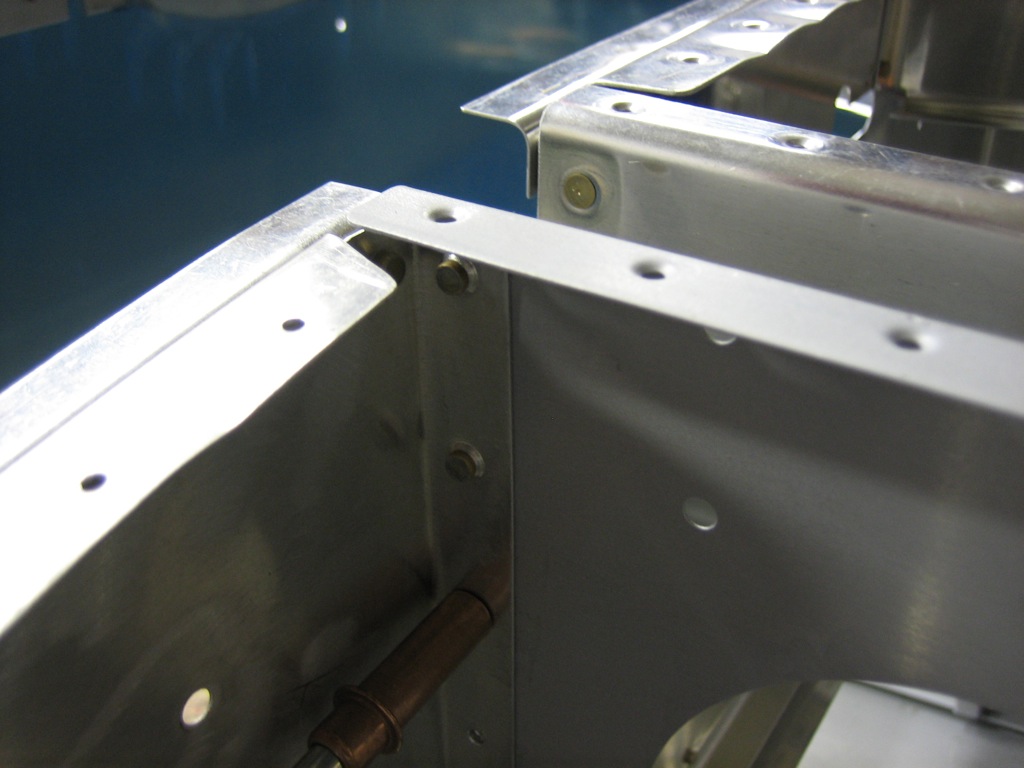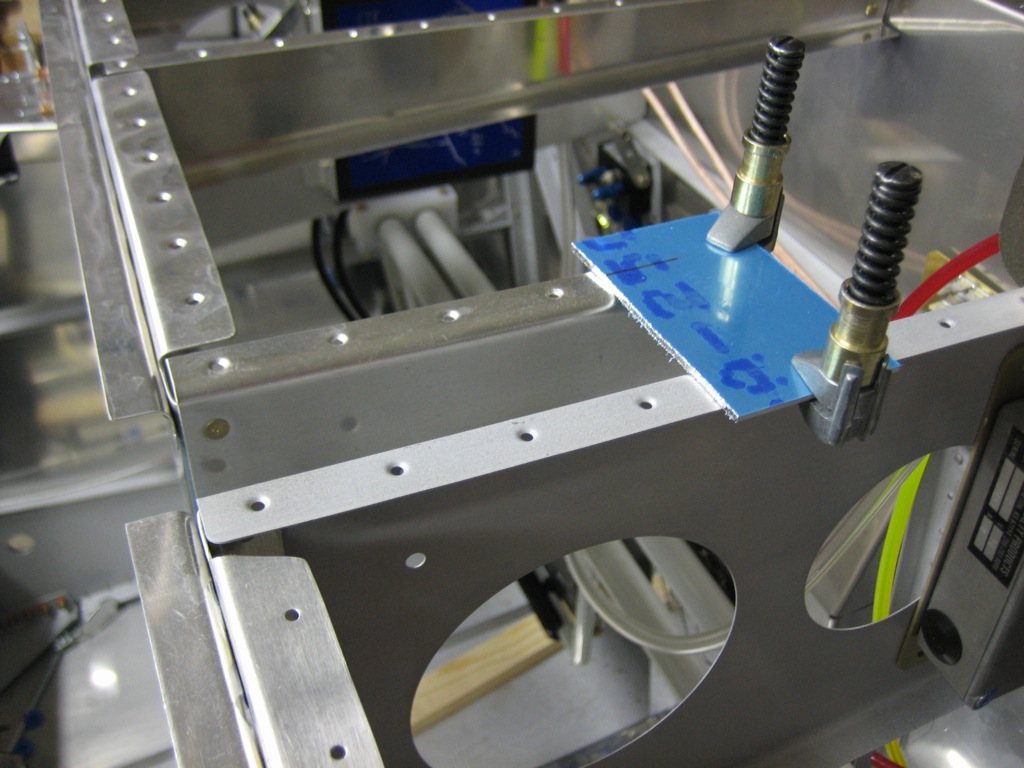I ended up positioning the cabin frame exactly where the plans specify, 17 7/8″ up from the aft canopy decks. After clamping everything securely in position and double checking the measurements, I started drilling. First up is to drill the aft edge of the channel to the top skin and F-706 bulkhead as well as to drill the channel flanges to the bulkhead.
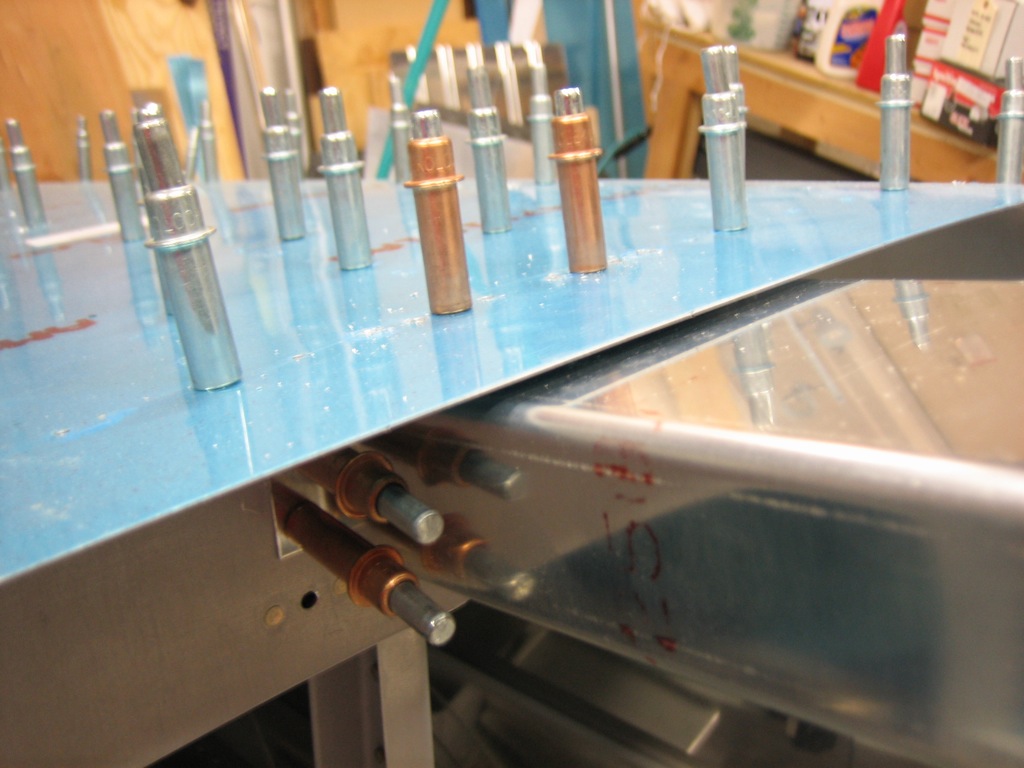
Next up is to layout the four holes that attach the channel to the cabin frame. I drilled these to #40 first using the fan and then opened them up to #30.

I also drilled the side angles to the channel and cabin frame.
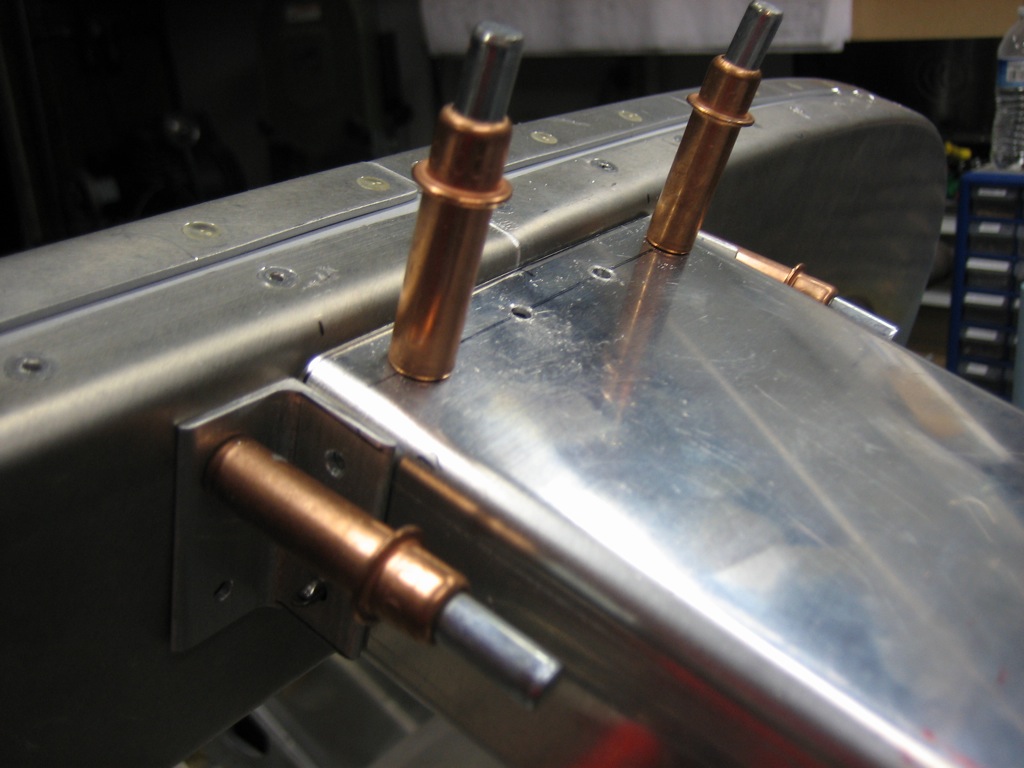
I used a couple of c-clamps to squeeze down the cabin frame where it had flared out near the bottom and was thicker than 1.5″. I then drilled the forward holes through the side skins and through the attach angles and cabin frame. These were initially drilled to #30 so that they could be clecoed.
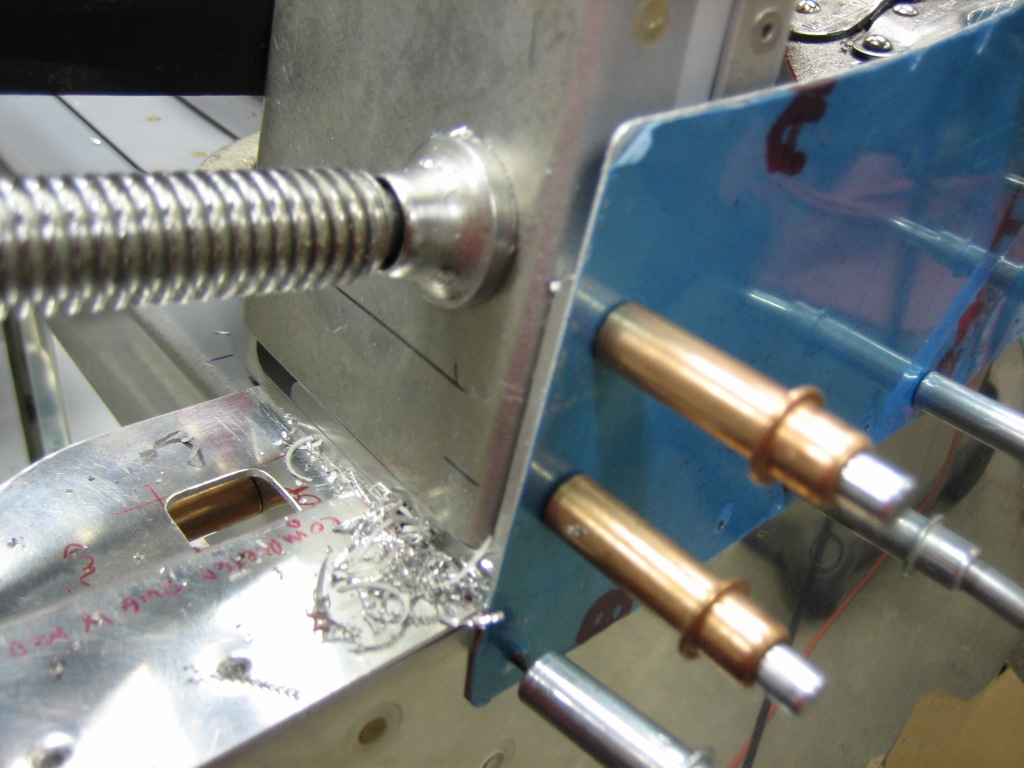
I then laid out and drilled the aft holes. These are drilled perpendicular to the cabin frame and then countersunk for a #10 screw. The countersink is asymmetric because the attach angle curves to follow the longeron. The countersink needs to be deep enough so that the screw is below the surface of the attach angle since the skin lays over the top of this screw.
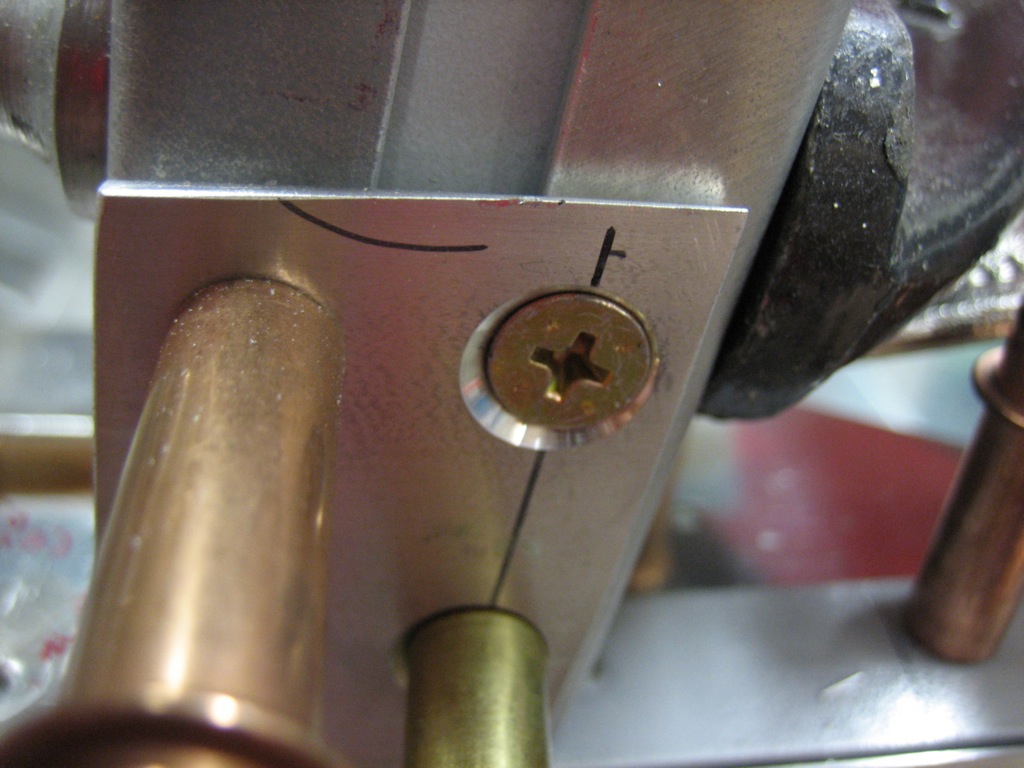
The forward holes are then countersunk for a #8 dimple. Notice that these holes are drilled perpendicular to the face of the attach angle, not perpendicular to the cabin frame. This is because a screw will screw in here and it needs to be flush with the skin. The aft holes need to be perpendicular to the cabin frame because there will be a nut installed on the inside and it needs to be flush with the inside face of the cabin frame.
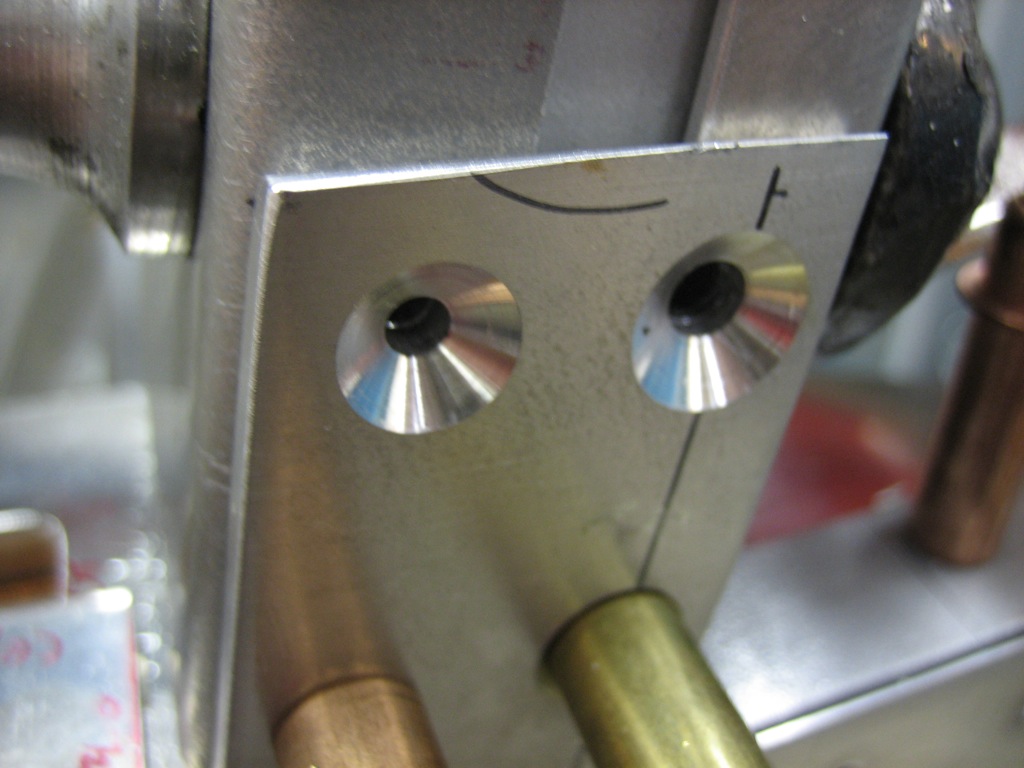
After countersinking the forward holes, I opened them up to #29 and then tapped them with an 8-32 tap for a #8 screw.
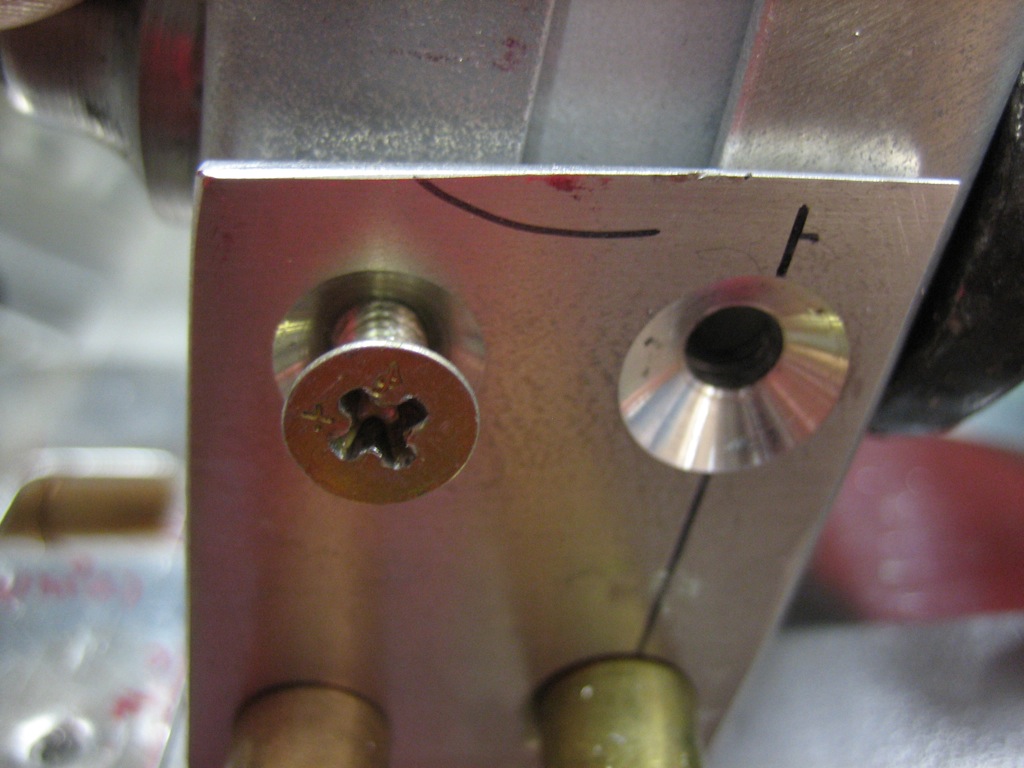
Finally, I drilled the inner holes for AN3 bolts and installed some scrap AN3-5 bolts.
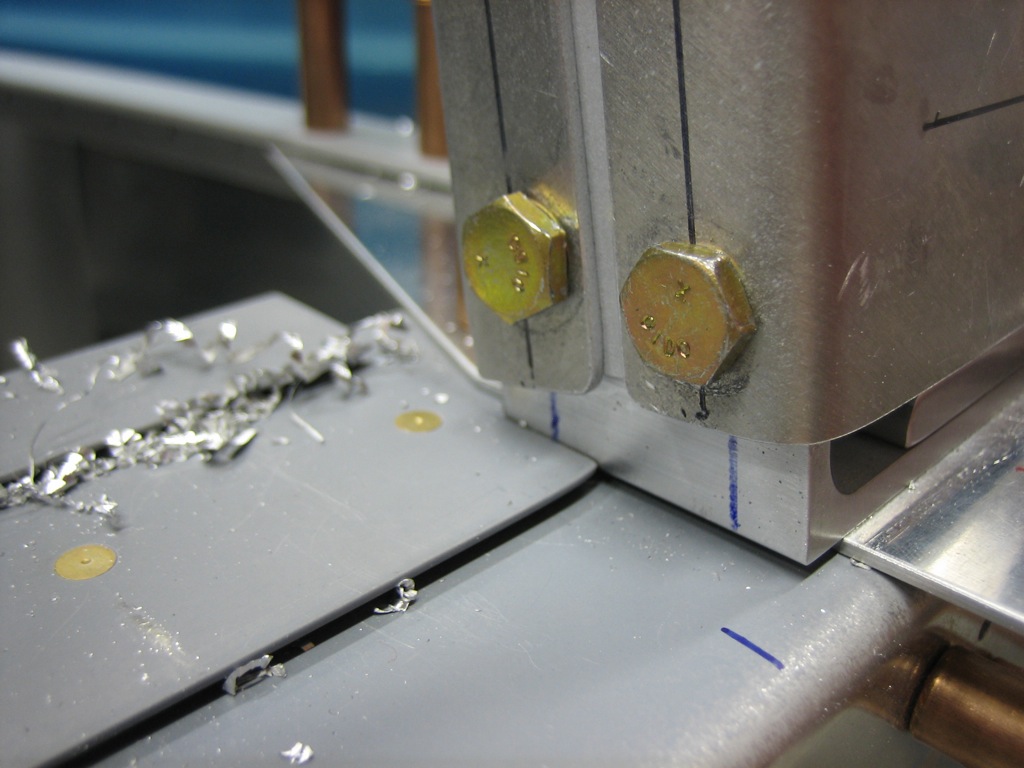
Here’s the whole cabin frame with all attachment points complete.

